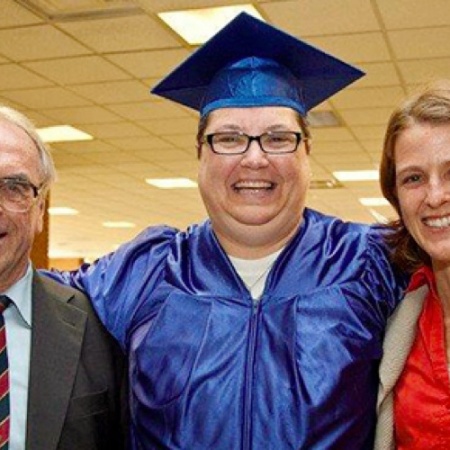Community News (V15-I44)
Pioneering politician Saghir Tahir is no more
 Saghir “Saggy†Tahir, 68, died Oct. 16, 2013, in Manchester,New Hampshire, his adopted hometown of nearly 40 years. He is a former member of the New Hampshire House of Representatives, having served Manchester’s Ward 2 from 2000 to 2010. Representative Tahir was one of the first Muslim-Americans ever elected to legislative office in the United States.
Saghir “Saggy†Tahir, 68, died Oct. 16, 2013, in Manchester,New Hampshire, his adopted hometown of nearly 40 years. He is a former member of the New Hampshire House of Representatives, having served Manchester’s Ward 2 from 2000 to 2010. Representative Tahir was one of the first Muslim-Americans ever elected to legislative office in the United States.
Representative Tahir immigrated to the United States in 1972 from Pakistan and became a U.S. citizen in 1978. He settled in Manchester where he raised his family and started a successful construction consulting business. His local business investments have also included at one time or another a convenience store, a restaurant, and various residential properties.
In addition to his business and political interests, Representative Tahir was active in several charities and advocacy groups ranging from the Hooksett Community Food Pantry to the Americans for Resolution of Kashmir organization.
Representative Tahir enjoyed watching sports, promoting democracy in his native Pakistan, and debating current events with anyone and everyone. He is survived by his wife, Nusrat and three adult children, Misbah, Adeel, and Sanam.
Most recently he spent a year in Pakistan campaigning for former cricketer Imran Khan’s Pakistan Tehreek Insaf. On his official facebook page Imran Khan expressed his condolences:
“I am deeply saddened to learn of the death of Saghir Tahir, a selfless and dedicated PTI worker. He was an American Pakistani who was elected 5 times to the New Hampshire State legislature. He was in Pakistan (Sahiwal) where he stayed almost a year dedicating himself working for PTI before the general elections. PTI is the poorer for his loss. May Allah grant his soul peace and may He give his family and friends the strength to bear this loss. My prayers go to his loved ones.â€
Selena Ahmed wins grant to study how weather impacts tea quality
 Selena Ahmed, a Montana State University professor, and other researchers have won a four-and-a-half year, $931,000 grant from the National Science Foundation to study how long-term changes in weather and shifting patterns of precipitation impact the quality of tea, farming communities and land-use strategies.
Selena Ahmed, a Montana State University professor, and other researchers have won a four-and-a-half year, $931,000 grant from the National Science Foundation to study how long-term changes in weather and shifting patterns of precipitation impact the quality of tea, farming communities and land-use strategies.
As part of their research, MSU health and human development professor Selena Ahmed and an interdisciplinary team of researchers will gather tea samples and analyze the chemistry and taste of tea, among other factors. Ahmed said she is particularly interested in learning how the health benefits of tea are changing and what management practices can best reduce risks associated with producing and distributing tea. The group will also examine the economic effects of changes in tea quality, Ahmed told the MSU news service.
“If the taste and chemistry of tea are so sensitive to the rains, how do shifting precipitation patterns of global climate change impact tea quality, farmer livelihoods and human well-being?†Ahmed asked.
Tea is a multi-billion dollar industry, Ahmed added, with many consumers choosing to drink it in order to receive health benefits.
Neuroscientist Khaleel Razak wins $867,000 career grant
RIVERSIDE, Calif. — Twenty years ago Khaleel A. Razak was an electronics engineering student focused on creating a telephone for hearing-impaired children in Chennai, India. Today he is a neuroscientist at the University of California, Riverside whose research on how the brain processes everyday sounds may lead to therapies for age-related hearing problems and Fragile X Syndrome.
An assistant professor of psychology and neuroscience at UC Riverside, Razak has been awarded a five-year, $866,902 Faculty Early Career Development Program (CAREER) grant from the National Science Foundation to further his research.
Razak’s lab at UCR focuses on how the auditory brain processes behaviorally relevant sounds and how those mechanisms are altered by developmental experience, disease and aging. The NSF grant will specifically support research on how the auditory cortex of the brain processes information about sound locations.
“Precise sound localization can be a matter of life and death,†he explained. “The auditory cortex is necessary for sound localization, but our understanding of the relevant neural processing is rudimentary. Sound localization is also interesting from a computational perspective because we explore how neurons integrate inputs from the two ears.â€
The NSF funding will allow Razak’s lab to investigate the neural computations that generate cortical maps underlying sound localization behavior in the pallid bat.
“The pallid bat is a bit unusual among bats in that it uses echolocation for general orientation and obstacle avoidance, but listens for prey on the ground, like crickets, scorpions and millipedes,†he said. “Behavioral studies indicate the pallid bat can localize sounds with an accuracy of about 2 degrees.â€
Pallid bats and humans appear to process sound locations similarly, calculating direction via intra-cortical networks that are little understood. Razak’s team will map neural selectivity for sound locations in the auditory cortex, and determine the neurotransmitters involved in shaping selectivity as well as the circuitry that shapes spatial selectivity. The project will provide fundamental insights on how intra-cortical networks shape feature detectors and maps.
Broadcom science awards results
Broadcom Foundation and Society for Science & the Public (SSP) holds an annual STEM (science, technology, engineering and math) competition for sixth, seventh and eighth graders. In total, Broadcom Foundation and classroom partner Elmer’s Products Inc. offer more than $500,000 in prizes, awards and rebates to the Broadcom MASTERS’ nominees, entrants, semifinalists, finalists, and their teachers and schools.
This year there are several Muslim semi-finalists:
1. Islamic School of San Diego, San Diego, California
Noorhan Zainab Amani (Grade 8)
San Diego, California
Biochar: A Rediscovered Soil Amendment and Its Effects on Plant Growth
2. West Shore Junior/Senior High School, Melbourne, Florida
Muhammad Ugur oglu Abdulla (Grade 7)
Melbourne, Florida
Mathematical Analysis of Electro-Cardiograms and Electro-Encephalograms through Fractal Geometry
3. Oak Middle School, Shrewsbury, Massachusetts
Saad Ahmad Chaudry (Grade 8)
Shrewsbury, Massachusetts
Smart Personal Rapid Transit System by Quantum Locking
and Superconductivity
4. Al-Amal School, Fridley, Minnesota
Yousuf Siddiqui (Grade 8)
Blaine, Minnesota
Is It Possible to Neurostimulate Cockroaches?
5.The Islamic Academy for Peace, Methuen, Massachusetts
Leena Ali Hamad (Grade 8)
Manchester, New Hampshire
Earthquakes in Unstable Areas
6. International Academy of Cincinnati, West Chester, Ohio
Abdul-Rahman Y. Smari (Grade 6)
Dayton, Ohio
How Stealth Technology Works













2013
991 views
views
0
comments